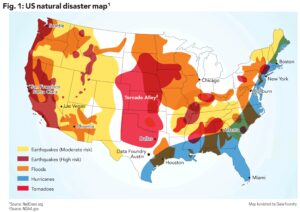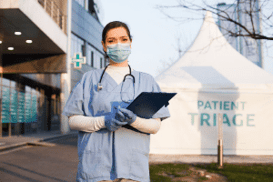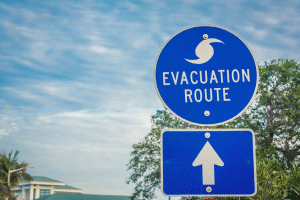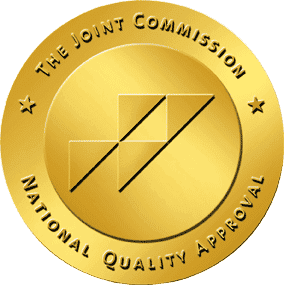Navigating Chaos: A Travel Nurse's Guide to Disaster Preparedness

Navigating Chaos: A Travel Nurse’s Guide to Disaster Preparedness
Nurses know firsthand that disaster can strike at any moment, and often without warning. Being prepared in advance is crucial for medical professionals. Nurses play a critical role in natural disasters, as patients will still require critical care despite the loss of electricity, flooding, or compromised infrastructure. Nurses in the emergency unit face the seemingly impossible challenge of triaging every disaster patient. In addition to the normal challenges nurses face, nurses rise to the seemingly impossible task of safely and efficiently caring for patients without their identification or loved ones around to flag possible allergies, medical issues, or provide support. In these cases, nurses are quite literally a patient’s lifeline.
National Disaster Risk Zones and Seasonality
Some areas are arguably more disaster-prone than others, but most natural disaster spikes depend on regional climate or weather patterns. Like the medical field, advancements in science and technology have helped field experts detect and communicate the threat of severe weather and natural disasters to the public faster and more accurately than ever before.

If you’re considering a travel assignment far away from home, FEMA’s National Risk Index is an interactive US map that will help you easily visualize and understand whether you can expect severe weather or natural disaster patterns in the area.
Seasonality
Crises often occur unexpectedly, but most weather-related disasters that we face have some established patterns around certain times and/or locations:
Hurricane Season
Where: Gulf coast, east coast
When: June 1st – November 30th
More info: https://www.cdc.gov/disasters/hurricanes/before.html
Tornado season
Where: Midwest, parts of southern US
When: Peak season March – July*
More info: https://www.nssl.noaa.gov/education/svrwx101/tornadoes/
Wildfire Season
Where: West, Midwest US
When: Peak season from May – September*
More info: https://www.fs.usda.gov/fs-tags/fire-season
General Preparedness & Best Practices
Learn the Healthcare Facility’s Disaster Protocols
Hospitals and other healthcare facilities typically have a disaster response protocol, especially in geographic areas prone to specific types of disasters. If you’re considering an assignment in one of these high-risk areas, check with your recruiter or the facility to learn more about the facility’s procedures and expectations during a disaster or crisis event. When in doubt, ask about the emergency protocol during orientation.

If you are not needed to stay, confirm with your manager whether you will be needed as a response or recovery person. This person usually comes in to relieve another who has stayed during the storm once the danger is over, and they are able to take a clear and safe path to the facility.
Gather Emergency Supplies for Personal Use
During uncertain times, you’ll want to stay prepared with anything you may need. Keeping an “emergency bag” easily accessible and packed with personal items including clothing, toiletries, and essential medicines for at least 3-4 days will help ensure you’re always one step ahead. Visit https://www.ready.gov/kit for a list of essentials everyone should include in their emergency kit.
Plan Your Stay and/or Evacuation Routes
It is common for facilities to allow (or even require) nurses and other healthcare professionals to stay overnight during natural disasters and crisis events. Having your emergency bag handy ensures you have all the items you need to stay healthy, hydrated, and alert through what might be the longest and most taxing nursing shifts you will ever endure. Even if you are not needed to stay, it is still best to familiarize yourself with all evacuation routes, especially if you’re unfamiliar with the area.

>> Stay vigilant and always prioritize your personal safety, wherever your travel nursing journey takes you.
Share your Plans with your Family Beforehand
Don’t wait to share your emergency or evacuation plans (including potential backup plans) with your loved ones. Whether you plan to evacuate the area, stay at the facility, or return to the facility to help relieve the initial response team, they will (understandably) worry about your safety and well-being. Share your plan with them and communicate any changes that arise, while also helping them understand that communication systems may experience delays or outages during and after a natural disaster or extenuating event.
>> View the original version of this article published on The Gypsy Nurse website on May 26th, 2023 as part of our partnership with The Gypsy Nurse.
>> Ready to discover your new home away from home? Find your next travel nursing destination today!
Resources:
https://www.nssl.noaa.gov/education/svrwx101/tornadoes/




